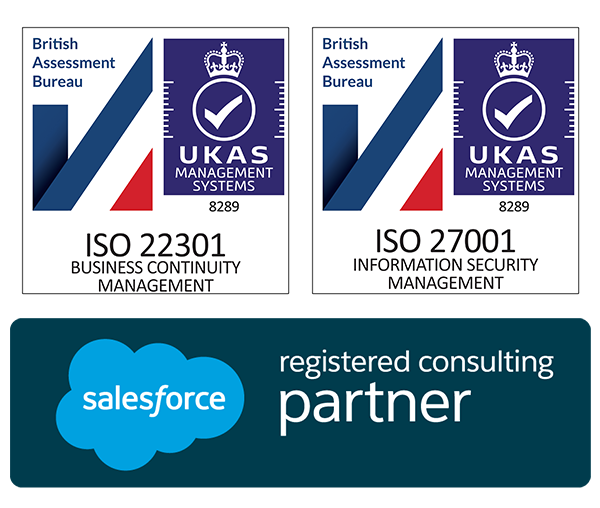
Managing Remote Teams and It’s Challenges

In 2018, The Global Leadership Summit predicted that more than half of all employees would work remotely by 2020. After Covid-19 that number is now estimated to be as high as 85%. That means, for companies used to a centralised sales force, the move to a remote structure and organisational design has presented leaders and their front-line manager’s unique challenges. Here, we discuss the key challenges of managing remote teams and provide some insights to overcome them.
Research has shown that employees and business leaders adapt differently to remote work. Because of this difference in perspective, challenges inevitably arise. As a leader, your ability to manage and solve the problems of a remote team can be the difference between a cohesive team that consistently meets their goals, and one that is isolated and disjointed.
Lack of Face-to-Face Communication
When managing remote teams, the critical processes of trust and building a rapport can be weakened or even not developed at all.
The primary mode of communication with a remote team isn’t face to face, you need to plan to develop these. Ideally, this will happen early in the relationship with your team – whether or not you’ve inherited a remote cohort, or are in the process of building one.
Make distance a chance to prove you trust your team
Forum’s recent Global Leadership Pulse survey revealed that trust has a direct impact on the engagement levels of remote teams. Great managers turn the autonomy that flexible, remote work has to offer a chance to show your team you trust them with certain responsibilities and tasks. This leaves your employees feeling empowered, engaged and connected – despite the distance.
Learn how to read between the lines
Great remote leaders need to be highly perceptive and attuned to the emotional cues you receive. This means that when managing remote teams you need to learn how to spot potential or existing problems from a distance. Rely on effective questioning techniques, such as:
- Open-ended questions (require elaboration and cannot be answered yes or no)
- Funnel questions (begin generally and ask for more specific detail with each answer)
- Probing questions (asking for examples, asking why, asking for clarification)
You will also need to rely on active listening skills, and look for any change in pitch, tone, or pace of exchange in your conversations to identify possible issues.
Employee Isolation
Research from the Journal of Personal Selling & Sales Management explains that workplace isolation is one of the most critical issues facing remote employees. The results of the study suggest that perceptions of workplace isolation negatively affect employee trust in supervisors and co-workers.
Make check-ins informal when managing remote teams
A practical way to make the team feel engaged with you as their manager is to eliminate the formality of weekly or daily updates and reviews. Rely on video and teleconferencing, or even text messaging to communicate with your team. The more frequent and less formal, the better.
It’s still important to schedule formal one on one meetings to review results, pipeline, workflow and activity if necessary. Having frequent, less formal check-ins in addition to official meetings is a key way to prevent employee isolation.
Focus more on the individual
With remote employees, trust replaces the traditional structures of hierarchy and control in a physical workplace setting. If you’re managing remote teams you need to build trust with them and facilitate that trust building between your team members. To do this, you need to connect more on an individual level with each member of your team. Find a commonality or shared interest.
You can’t always talk about work with a remote team. Spend some time focusing on the individual to keep them feeling connected and engaged.
Prioritise in-person interactions
The most successful managers of remote teams report that face-to-face forums, conferences, workshops and get-togethers are planned in advance and happen regularly. In-person meetings provide opportunities for remote employees to interact professionally and socially with the people they work with. This creates a foundation in the team dynamic that facilitates trust and team rapport.
You can start with an annual meeting at the headquarters of your company, and have the meeting structured in advance. Use the time to provide face-to-face coaching and guidance, and allocate enough time for socialising and developing personal rapport.
You are the best judge for how often your team needs to be together in person. If you want to meet more frequently, choose a conference to attend together. Plan this into your budget when managing remote teams, so it’s feasible for your team to participate.
Sustaining Employee Engagement
Organisational commitment and employee engagement is shown to be positively correlated to job performance. Measuring employee engagement can be a significant challenge. This is because you lack the face-to-face interaction that traditionally allows managers to assess employee commitment to their roles and the organisation. Employees who are engaged in their jobs are generally in better health and have healthier habits than employees who are not. According to a report by Gallup, there are three ways to accelerate employee engagement:
Select the right people
The first line of defence in keeping remote employees engaged is to prevent the problem from arising in the first place. As much as possible, ensure you are hiring individuals who are enterprising, driven, and able to work independently. While any role will require these characteristics to a degree, the amount of independent work required by a remote employee makes possessing these traits significantly more valuable.
Develop Employee Strengths
HBR reports that developing employee strengths is far more useful to boost both sales and overall job performance than trying to improve weaknesses. When your team feels empowered, confident in their ability to perform, and supported in their roles, their engagement levels will remain buoyant, even as they face adversity.
Elevate Employee Well-Being
Gallup research found that when an organisation increases employee engagement and well-being, it pays off in lowering healthcare costs and accelerating important performance outcomes. As a leader, you need to be highly proactive when managing engagement levels. Work with HR to improve employee engagement that is specific to a remote work environment. One way to do this is to ask your remote employees what would increase their sense of well-being. This emphasises your proactive leadership style, and you will learn what prosperity means to your team.
Employees Feel Invisible
The best leaders recognise that they are working with an array of personality types. Employees who have high needs for recognition may struggle more as remote workers. This is because they may feel they have to do more work to get recognised. For individuals with high needs for recognition, a lack of acknowledgement can make them feel invisible.
Be vocal about individual and team contributions
As a remote manager, actively and consistently vocalise team wins and individual performances during team meetings. This is a crucial way to make remote reps feel seen by their team and recognised by leadership.
Take the time to mention when team members upsell, close a sale, or hit their targets. For those who thrive off recognition, these simple acknowledgements lead to higher rates of employee engagement. This leads to higher job productivity and performance.
Advertise your accessibility
Make it clear to your team via a shared calendar or team project management board when you are available. This sets clear guidelines for how and when you will respond to phone calls, e-mails, or texts. When you are managing a remote team, having individuals who feel like they can reach out to you in any given circumstance is crucial.
Be a supportive leader
Remote managers need to do better than traditional managers at demonstrating supportive leadership. This is because how leaders handle remote employees has been shown to be a good predictor of employee job satisfaction, commitment , performance, and turnover. Supportive leadership is more crucial in remote teams. That’s because so much more of your team functionality and performance relies on trust.
To make your numbers when managing remote teams, demonstrate high levels of support in your leadership style. This goes beyond weekly check-ins, and includes encouraging your team to take risks in developing new approaches. You’ll need to allow for failure in new methodologies or techniques, or supporting them in personal goals they have outside of work.
Create a community where your team can interact
Integrate a technology that addresses the unique challenges of remote work. Creating a communal online space for your team to gather may help eliminate the anxieties remote workers feel. It can include:
Information on each employee that includes personal information like hobbies, favourite activities, personal goals, etc.
- Areas of expertise of each employee
- Mutual interest areas: recipes, fitness plans, playlists, photo sharing, etc.
- A section for frequently asked questions addressing issues and resolutions related to remote work
- An informal chat space (i.e. virtual water cooler)
All in all, when managing remote teams, a proactive leader is required. Managing your remote team is not unlike managing an in-office team. However, it requires a heavier emphasis on trust-building, creative and frequent communication. Not to mention implementing team processes, and using technology to connect. As the manager, be proactive and supportive in your leadership. This will help you to get the best engagement and performance out of your remote employees. With the ever-growing list of tools at your disposal, there’s little excuse.
2 Comments
-
Karen
We also have such problems in our team. However, now the situation is much better. That’s why I can recommend you some lifehacks: Provide regular both formal and informal meetings. Use one tool for communication and managing tasks. For example, in my company, we use https://stork.ai/. Meet with each other in real life, if possible. Try flexible time management. Ask for results, not for working hours.





Tina
Remote teams are how the future of business will be done. However, with people working remotely and on a flexible schedule, your team may be located in different places at one time or another. This arrangement poses many challenges to communication and collaboration - but luckily, there's plenty a virtual team manager can do about this!